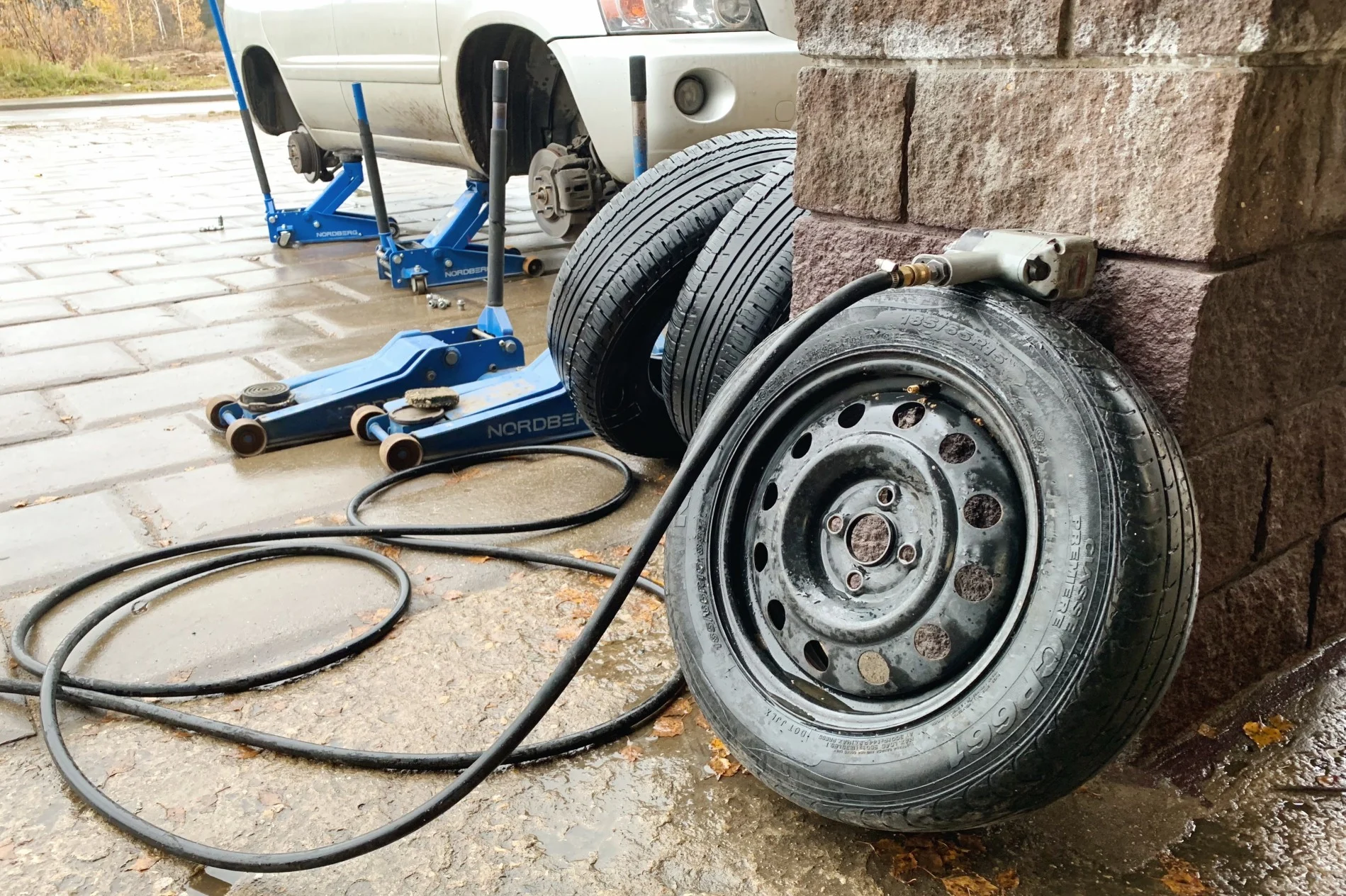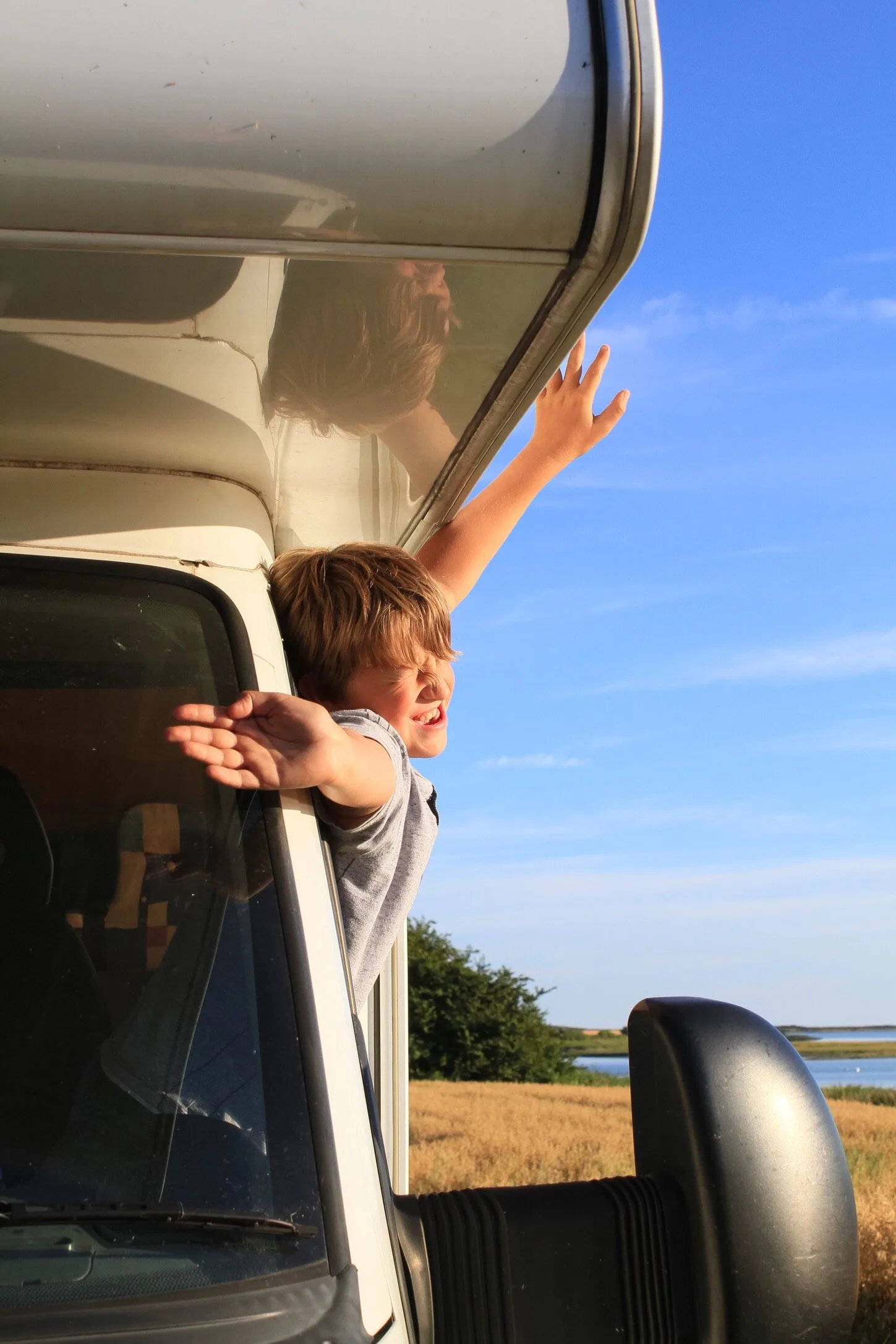RV travel days don’t have to be stressful.
Driving or towing a large RV can be quite challenging (especially if you’re traveling with kids or pets). However, we’re here to share 7 rules we follow to make travel day much more enjoyable.
We learned these lessons over 5 years of full time RV living. During the first few years, we had a lot of bad travel days. From those experiences, we finally realized how to make travel days stress free.
Let’s dive in!
1. Don’t be clueless to your route
Routing to your destination before departure is essential. Beyond that, you should always research your route. Use a tool like RV Trip Wizard to avoid low hanging bridges and tunnels.
Here’s other route-considerations you should research:
- Tolls: Have cash on hand if needed
- Steep Mountain Passes: It’s always better to know challenging stretches of road before you stumble upon them.
- Gas Stations: Will you be traveling on remote stretches of roads?

2. Don’t leave with an empty tank
If you’re towing a trailer – fill up with gas the day before you depart. This will save you a headache of navigating small gas stations.
If you’re driving an RV, research easily accessible gas stations before you depart.
Pro Tip: When your travel days include an overnight stop, consider staying at a truck stop. You can fill up with gas, get a warm breakfast and take a long truck stop shower.
3. Don’t rely on junk food
It’s so easy to eat exclusively at gas stations and fast food restaurants during travel day. Take 30 minutes the day before you depart to make your driving snacks.
Chopped fruit, sandwiches, yogurt and smoothies are perfect for RV travel days.
Even if you skip just one fast food meal, you’ll feel better for it!
4. Don’t Speed
Don’t speed! It’s as simple as that. RVs and trailers aren’t made to go fast. In fact, sometimes their tires are rated below the interstate speed limit.
RV tire blowouts often occur due to prolonged high speeds.
Stay safe on the road by knowing your tire rating and keeping below that number.

5. Don’t drive too far
It’s important to not overextend yourself on RV travel days. Knowing how far is too far is a valuable lesson.
Sometimes it takes a few “too long travel days” to find out where that limit it.
We like 150 mile travel days. However, we driven our fair share of 500+ mile days.
Driving too far is the easiest way to ruin a travel day.
6. Don’t wait to pee
This is my personal number one lesson. RV travel is slow. That’s just a fact that we’ve come to accept. Stopping to pee (no matter how often) is always worth it.
This is especially true before you pull into a campground.
Parking an RV without arguing is hard. Doing it when you have to pee as well is nearly impossible.

7. Don’t forget the journey
RVing is not all about the destination…it’s about the journey!
Take state highways over interstates. Enjoy local roadside vendors. Stop for lunch at a unique diner.
Travel days are honestly some of my favorite days. I love seeing new towns and classic americana scenery.
When it comes to RV travel days, you better learn to enjoy the ride!
Bonus Tip: If you’re thinking about using your RV to “bug out” from the Coronavirus, here’s our resource that share tips and potential locations!
The Best FREE Camping in the USA
We love camping across this amazing country. And, we really love it when its free. Here’s our list of the 20 Best Free Campsites in the USA.
If you haven’t tried free camping before, also known as boondocking, take a look at our beginners guide to boondocking filled with everything you need to know to get started.
You’re right, never pass up an opportunity to pee!!
Ha! When I leave northern MN in late oct for the winter driving only 150 miles a day is going to take too long to get out of the cold and maybe snow. Plus then having way to much time to kill in a Walmart parking lot! So the first two days are usually 600 +. Then I take it easy. Often staying someplace for week, then moving only 50 miles or so.
Peeing. One nice thing about traveling in an RV is I don’t have to look for a place to pee. I just have to stop.
Truck stop showers. $10 to $12 for a shower is never going to happen for me. Lol!
Yes number 6 is very important. We have been stuck in traffic for what seemed like hours having to pee in that situation is not fun. I learned many years ago while in the Marine Corps infantry you never pass up a chance to piss.
To add to number 3…don’t drive hangry! I’ve been guilty of this too many times!
When I am going south in the winter, I want to get a significant climate change before I stop. I usually get from Indiana down into Georgia before I stop for the night. I try to go through Atlanta after midnight but before five o’clock. Usually, that stop is at a Cracker Barrel because they have designated RV parking, welcome RVs to stay through the night, and open at 6:00 AM for breakfast. From there, I make it down to Tampa Florida before stopping again. When my late wife was still alive, I could not travel like that but this is the way I love to travel. My point is that travel distances in a day is not a one size fits all. As you can see here, it varies according to the circumstances, geography, and traffic patterns. It would be better to say to find the pattern that works best for you and apply it to your travel day.
I think that I would echo Carl’s last sentence. As an ex over-the-road driver (many years ago) I’m quite comfortable making in two days what some folks would take in a week or more. Of course we are going from one place (Black Hills of SD) to another (Quartzsite AZ) and back later along a route that is now boring but which is the most economical routing.
And when we drive Emergency Response Vehicles for Red Cross it’s normal for us to travel from the ‘hills in far Western SD, to the Gulf Coast in two days. Of course then the need is greater so that’s a huge stimulator and motivator. In ANY case the absolute bottom line MUST be safety. NEVER overdrive your capacity to drive safely.
I pull a 32 foot camper and find 250 is about all you would want too do at 66 mph a safe speed for most camper tire’s . It is impossible that wife will pass up a rest stop . I would not hear the end of it to the next one!